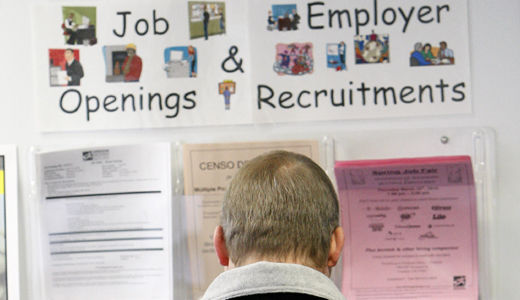
This morning’s release of the government employment report showed 162,000 payroll jobs gained in March, the largest jump in three years. The gains were not enough to change the jobless rate which remained unchanged from February at 9.7 percent, with 17 million officially jobless.
Of the jobs gained in March 48,000 were directly created by government hiring for the 2010 Decennial Census. When you exclude the Census hiring, state and local government actually shed 9,000 jobs, while the private sector added 123,000 jobs.
Much of the private sector “hiring,” however, was an upward correction to winter storm subtractions from February payrolls.
The March hiring did not change the overall 9.7 unemployment rate since nearly 400,000 workers entered or reentered the labor market during the month.
The Economic Policy Institute, in a report issued today, warns that hiring for the Census will make things look better than they are for the next few months. These are temporary jobs, the institute notes, and the number of these jobs showing up in payrolls will surge to over 600,000 in May but then decline to near zero by the fall.
Manufacturing employment increased slightly by 17.000 jobs, totaling 45,000 jobs in the first three months of 2010. It is still more than 600,000 below its level one year ago.
After losing an average of 72,000 jobs per month in the past 12 months, construction remained steady at 15,000 in March. With residential construction stagnant, and commercial construction falling, construction is expected to lose jobs as early as this month.
African American and Latino workers continue to be the hardest hit, with official unemployment rates for Blacks at 16.5 percent and Latinos at 12.6 percent. For adult African American men the official rate moved up to 19 percent. Many economists put the more realistic figure between one third and 40 percent.
Although the March report is a big improvement from the hundreds of thousands of jobs lost each month during 2009, job growth is effectively stalled and long-term unemployment is slashing what people have to spend and undermining the economy.
In March more than two in every five unemployed workers were jobless for more than six months and the situation is rapidly deteriorating further.
The number of long-term unemployed (those jobless for 27 weeks or more) increased by 414,000 in March to 6.5 million. Overall in March, 44.1 percent of unemployed people were jobless for 27 weeks or more.
Labor economists generally do not accept the overall national unemployment figure of 9.7 percent given by the government. When both unemployed and underemployed workers are counted there are some 26 million people without full-time work – a 16.9 percent unemployment rate.
The AFL-CIO reminded readers in a statement this morning that “some 150,000 new jobs a month are needed just to keep pace with the growth in the labor force, and a stunning 11 million jobs must be generated to return to pre-recession employment levels. Yet there are more than six workers for every one job.”
U.S. Treasury Secretary Timothy Geithner said this week that the jobless rate is “still terribly high and is going to stay unacceptably high for a very long time” because of damage caused by the recession.”
“It doesn’t have to be for a very long time if Congress and the White House take action,” declared EPI economist Heidi Sheirholz this morning. “The increase in March payrolls doesn’t change the fact that unless policymakers take bold action, all key signs point to a very long, very slow recovery for jobs.
“It is time to face up to the facts,” the AFL-CIO statement says. “The private sector is not creating jobs.”
A recent survey from ADP employer services shows private sector employers cut 23,000 workers in March.
As part of the AFL-CIO Good Jobs Now campaign the federation is calling upon big banks to resume lending to help credit-starved communities create jobs.
The federation is also backing a bill introduced by Rep. George Miller, D-Calif., to save or create nearly 1 million local jobs. The Local Jobs for America Act provides $75 billion over two years to local communities to stave off planned cuts or to re-hire workers laid off because of tight budgets.
Another critical part of the AFL-CIO jobs campaign is extending the lifeline for jobless workers.
Because of Republican Sen. Tom Coburn of Oklahoma, the Senate left for a two-week recess without extending unemployment insurance, causing 200,000 workers per month to lose their safety net.
The federation is calling for extension of both unemployment and COBRA health benefits for another 12 months.
Photo: Searching for a job at WorkSource Oregon, March 16, in Tualatin, Ore. Rick Bowmer/AP










